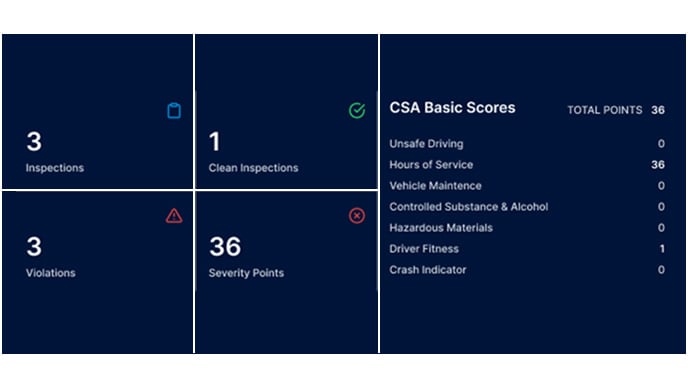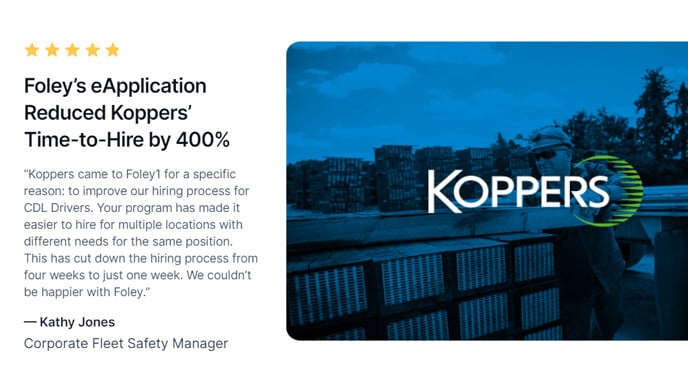Hours of Service: The 100/150 Air Mile Exemptions

The FMCSA hours of service (HOS) regulations are a complex set of rules aimed at ensuring drivers of large vehicles aren't too tired or overworked to drive safely.
Long-haul CDL drivers who travel outside of 100 air miles are required to take a 30-minute rest every eight hours and to log all of their activity during a 24-hour time frame. This includes everything from driving time, to fueling, to time spent in a sleeper berth.
DOT-regulated businesses that operate primarily in a local area are allowed to utilize what’s known as the 100/150 Air Mile Radius Exemption.
What is an Air Mile?
An “air mile” is a nautical measurement of distance that excludes any twists or turns. If your headquarters is located at Point A, an air mile is the distance you would travel in a straight line to your destination: Point B.
Who Can Utilize the 100/150 Air Mile Exemption?
The 100 air mile exemption is for CDL drivers who:
- Operate within 100 air miles
- Go off duty within 12 hours
- Report back to the same work location every day
- Have at least 10 consecutive hours off before starting their next on-duty period
The 150 air mile exemption is for non-CDL drivers who:
- Operate within 150 air miles
- Do not drive through any state that requires a CDL for the type of vehicle being driven
- Report back to the same work location every day
- Do not drive after the 14th hour of coming on duty in seven consecutive days
- Do not drive after the 16th hour of coming on duty in two consecutive days
What are You Exempt From?
Certain hours of service rules apply no matter what. For example, drivers are never allowed to drive more than 11 hours or drive after having been on duty for 14 hours.
Although drivers are not required to maintain a detailed log of their duty status, they are required to record their on-duty time.
Time Records
Drivers who qualify for these exemptions must maintain a record of:
- The time they go on duty
- The total number of hours they are on duty
- The time they go off-duty
It is important to understand that ALL of the qualifications listed above must be met to use the exemption. If a situation arises that nullifies even one of the qualifications, then all of the standard hours of service rules apply.
For example: Joe begins his day at 8:00 am. At 7:30 pm he is still working on a job that is taking far longer than expected. At 8:00 pm, Joe must begin keeping a log detailing all his time from 8:00 am for the next 24 hours. In addition, he has to ensure he is done working by 10:00 pm or he cannot use his truck to drive home.
Electronic Logging Device (ELD) Mandate Exemptions
Anyone who qualifies for the 100/150 air mile exemption may also be exempt from the ELD mandate.
Trust Foley for Clarification on the FMCSA Hours of Service Regulations
As with all FMCSA regulations, it's important to familiarize yourself with the hours of service requirements. It may seem like an unnecessary hassle for companies that don’t travel long distances, but if an FMCSA auditor finds you out of compliance with any of the hours of service rules, the fines and penalties you could face may be far more severe.
In fact, most of the top FMCSA violations of 2023 involved hours of service, including false reports of records of duty status and not using the appropriate method to record hours of service.
The good news? You can rely on Foley for the latest FMCSA hours of service regulations. Check the blog for regular updates throughout 2024!
Related Articles
What You Need to Know About Spring Storms & the Adverse Driving Conditions Exception
Understanding the DOT Clearinghouse Pre-Employment Query Requirement
Why Your Drivers Should Pass DOT Physical Exams Before Getting Behind the Wheel
.png)


